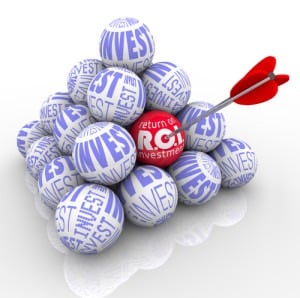
With so many businesses considering launching IoT projects, the biggest question is when will they see a return. Here are some things to consider.
Internet of Things (IoT) projects represent massive undertakings even for the most technologically advanced and forward-thinking organizations. Because IoT projects require significant time and resource investments, company stakeholders always want to know: “How soon until we start seeing a return on our investment?” In many cases, ROI is tied to the quality of planning done beforehand.
Businesses that blindly rush into a project or take an unstructured approach to implementation, treating IoT as a more casual experiment, risk experiencing a significant delay before experiencing measurable ROI. On the other hand, those that have their sights set on specific outcomes can accelerate their time to value simply as a result of coming to the table with a focus.
One of the biggest benefits of starting off with an outcome-focused program is that it’s much easier to understand which datasets and insights matter most to the deployment. Having reports, real-time data, and visualizations to support decision-making makes it simpler to fine-tune an operation and reap the rewards of an investment.
See also: 3 habits of successful IoT companies revealed
But, a business needs to do more to fast-track their ROI. Here are four core ROI considerations for making a deployment profitable in as little as 12 months:
#1: Clearly define your goal
The value of IoT stems from its ability to solve business problems, so start by selecting one and working back. Where is it? And if you were to eliminate it, what would it solve? The best approach is to start with small, measurable and outcomes-focused goals, such as improving output for a particular production line by 10 percent or reducing the return rate of defective products by 15 percent. Once these have proven successful, you can expand these goals into IoT solutions that address broader, higher-level business goals, such as making sure the right amount of raw materials is always in stock.
Establishing IoT solutions around short-range business goals can confirm the relevance of the data you’re already collecting, and expose any other IoT data points or sensors that you may need to install or activate to understand and resolve a problem. The outcome will either contribute to reducing expenses or increasing revenue – and in best-case scenarios, it will positively impact both. It is important to note, if you happen to alter your goal during this first year, you’ll need to adjust your timeframe for expecting ROI.
#2: Consider both direct and indirect benefits
In order to measure the business outcomes for a goal, you must consider the direct and indirect benefits involved. For example, if IoT enables you to improve the throughput of field technicians then you will see direct improvements in efficiency and resource utilization that result in backlog reductions for outstanding requests. However, you will also realize indirect benefits as well, such as decreased customer downtime due to increased technician productivity – enhancing the overall customer experience and cultivating greater loyalty. Improving repair speed and accuracy also allows an organization to charge a premium for enhanced SLA, creating new revenue opportunities. All the more reason to be sure to account for both direct and indirect benefits to create a holistic view of ROI.
#3: Know the real costs
The cost of an IoT implementation can vary depending on its size, complexity, and any professional services required prior to launch. These costs can range from custom development to integration with 3rd party solutions, and so on. Professional services can actually represent a significant portion of the up-front costs, so it’s important to estimate the useful life of the solution. Following your company’s software depreciation schedule is a simple, conservative approach, though the benefits of the IoT solution may extend beyond this window.
#4: Plan for velocity
A holistic ROI assessment requires considering velocity – or value accumulated over time. IoT represents a shift in technological perception and behaviors within a company, so the benefits need to be measured over the long haul. Elements like machine learning and predictive analytics inherently improve over time. So as the quality and size of the data pool increases, so do the accuracy and applicability of these elements. For example, through rules-based logic, an IoT system can detect an anomalous condition on a production line and then execute a series of automated steps to correct the error. Or it can automatically adjust operating parameters to minimize damage while also notifying a technician of the issue and repair urgency.
Incremental improvements can add up to substantial gains, so taking the long view when calculating ROI will yield a more accurate result. So, limit the scope of your analysis to the pilot initially. Then, upon completion, perform a robust ROI analysis of a full production deployment based on the outcomes of the pilot. Incorporating real-world experience can help you raise or lower expectations with greater precision, to keep your IoT objectives more closely aligned with reality.
Measuring and communicating ROI
As you kick-off your IoT project, it is important to share real-time data with stakeholders. Outside of dedicated monthly KPI review meetings, project owners should leverage IoT’s live data streaming capability to build interactive dashboards and data visualizations that communicate results at any time. Matching the output report to your initial goal, such as improved asset uptime or reduced costs, is critical in extracting the most value from your data. Anything else can be a distraction. So, ask your stakeholders what a) they want to learn from the data, and b) what decisions they want to make from it. Incorporating only those data sets that align with the desired outcome are key to making progress toward your goal.
Cross-system reports can also extend the value teams can get out of IoT data sets. Incorporating popular data visualization tools such as Tableau or Microsoft Power BI, and making the information broadly available, creates opportunities for anyone company-wide to better understand the underlying drivers of company success, spot unseen trends, and contribute new ideas. Effective reporting is also essential for getting the necessary number of stakeholders involved in an IoT deployment (and on the same page) to realize maximum value from the investment.
Planning for and measuring IoT profitability in the first year will deliver multiple advantages to your business. Discussing real-time data and insights from the beginning will align stakeholders across the organization on expectations. As your business needs evolve, your data will reflect this, allowing you to more easily isolate poor performance and progress naturally from success to success.





























